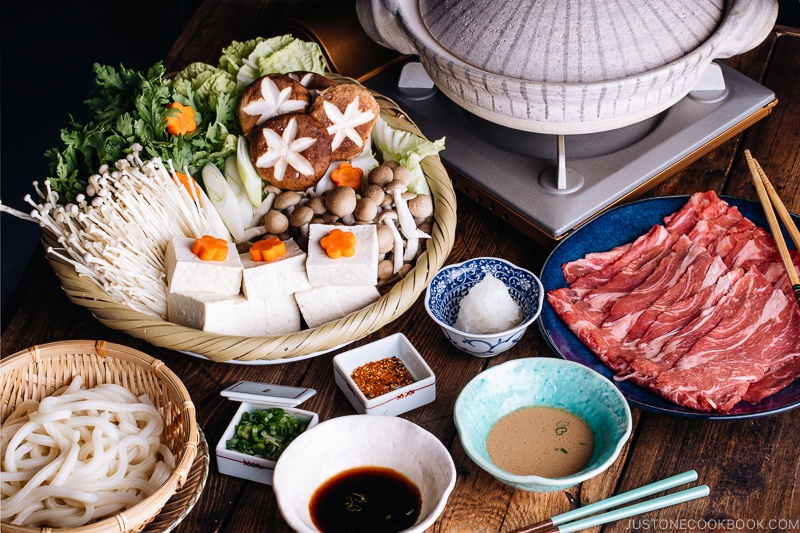When visiting shabu shabu restaurants, customers will usually be free to cook a variety of main ingredients such as meat and vegetables with the desired level of maturity. But unlike the presentation of shabu shabu in Indonesia, in Japan itself, there are some unwritten rules that are usually done when going to cook and make shabu shabu.
The first is to understand the order of vegetables to be cooked. When the dashi or broth from the kombu stew starts to boil, put the vegetables that are hard-textured and not easy to soften first such as radishes, carrots, onions, and shittake mushrooms. In addition to making vegetables not easily destroyed, the taste of dashi will be even more savory because of the additional juice or juice from vegetable stew.
After that, you can add thin slices of beef into the boiling dashi. But, do not boil the meat too long because it will damage the texture so it is more tough and tasteless when eaten.
In Japan, meat slices are usually not boiled, but only dipped in dashi three to four times until the color of the meat turns paler.
This is in accordance with the name shabu shabu or swish swish which refers to the process of cooking meat by swinging it into hot water.
This cooking method makes the meat texture softer with some parts of the flesh that are still pink. Even though it is cooked in a short time and looks perfectly immature, it tastes even more juicy with fat that is still melting when eaten.
So that the flavor is more evocative, dip the meat into a tasty and creamy sesame sauce or ponzu sauce with a sour-salty flavor before eating. But don’t add too much sauce because it will make the natural flavor of meat and vegetables covered with a strong sauce flavor.
Especially for easily cooked vegetables such as lettuce, mustard greens, and enoki mushrooms, you can boil it for two to three minutes before eating it immediately. This also applies to complementing shabu shabu such as tofu or fish meatballs so that the texture remains soft and does not break down because it is boiled too long.

